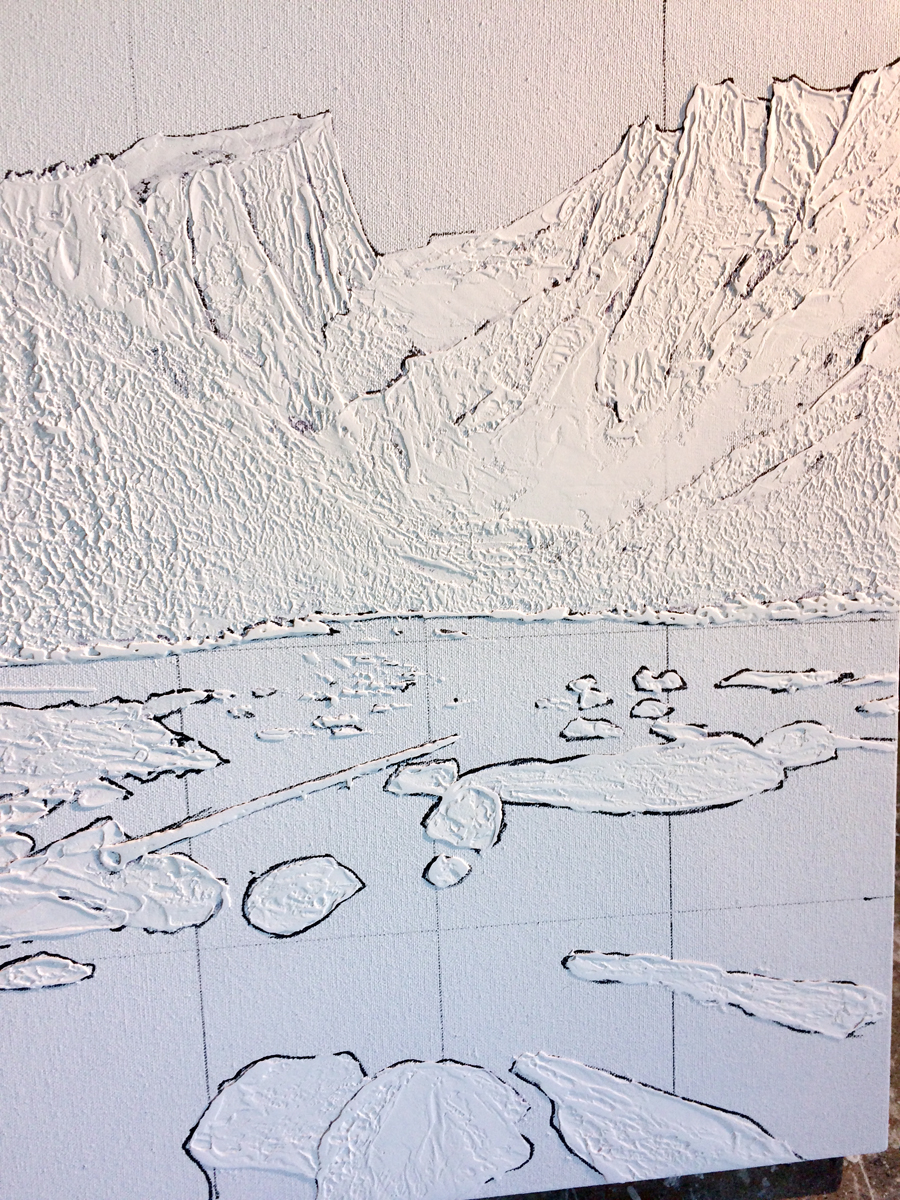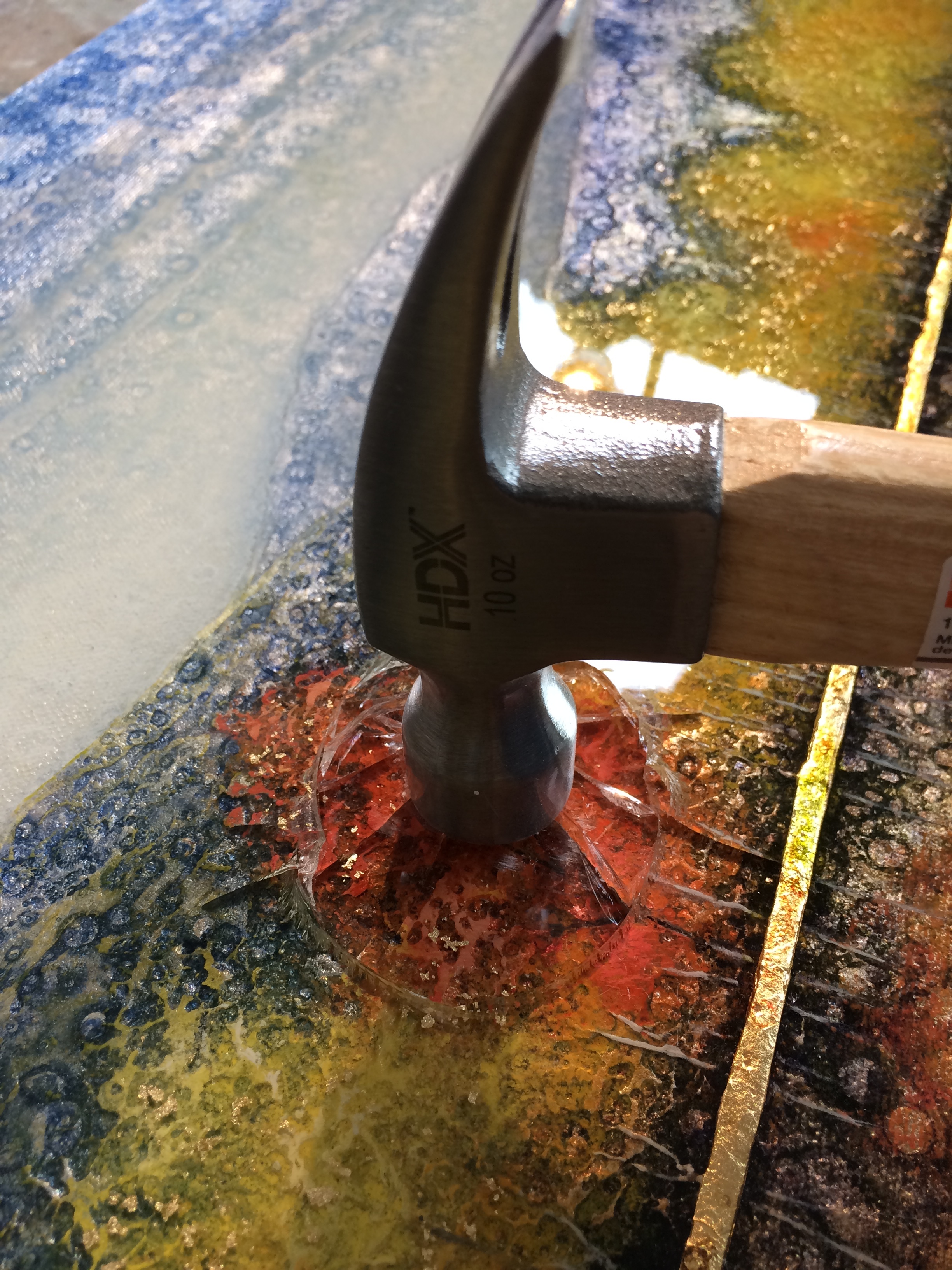"Azure Spirals"
"Azure Spirals" close up
A few weeks ago, a friend of mine, Tony Morton, connected me to 30a Home, an incredibly cool company in Oklahoma City that is both an interior design warehouse (furniture and furnishings) as well as top notch interior design resource, working with builders, designers, architects, and one on one clients, providing ideas and resources for both residential and commercial projects.
Their headquarters / showroom is in Oklahoma City and it is beautiful. My assignment was to come up with several new abstract and installation pieces that would fit into this contemporary space, because 30a Home agreed to represent me. So...where to start?
In the middle of the night a couple weeks ago, the idea came to me (I don't know why this always seems to happen at 2:30 AM but that's pretty common for me). So I came up with a brand new way of creating an abstract oil painting. I am still (and always) painting on top of aluminum leaf (which reflects light back through the oil paint, creating vibrant color), but I figured out a way to leave some of that leaf raw (no paint at all), creating a painting that almost reminds me of batik -- with glimmering silver lines between fields of color. When the paint is all applied, then I cover the whole piece with solar-resistant resin.
I'm including photo examples of the first two pieces I did, "Azure Spirals" and "Aqua Matrix", but I have two more pieces nearly done, as well as a large triptych which is well underway. So...more photos will follow. The abstracts will be delivered to 30a Home in July, and a large installation piece scheduled for an October delivery.
I'm excited. People visiting my studio often ask me "When did you invent this type of artwork?" and I always laugh. I'M STILL INVENTING IT. That's what makes this job so much fun. Always dreaming, scheming and playing. Sometimes the results are awesome. And then...sometimes those ideas do not work at all. But photos of those bungles don't end up on this blog. :)
"Aqua Matrix"























